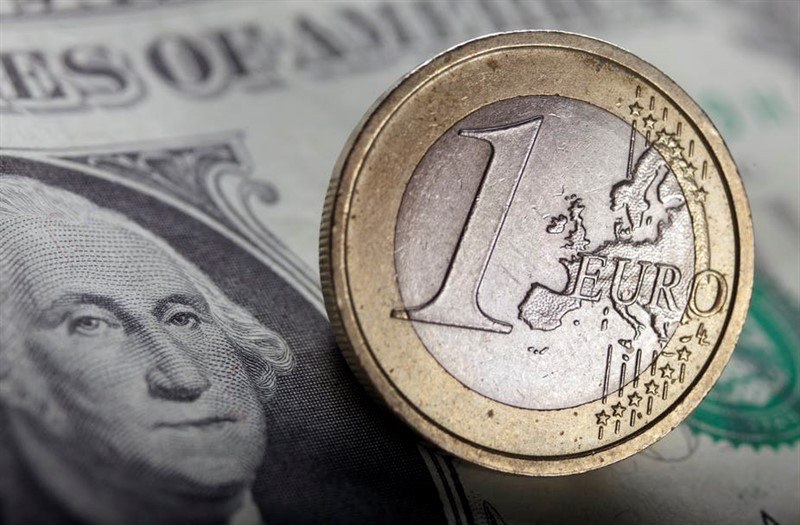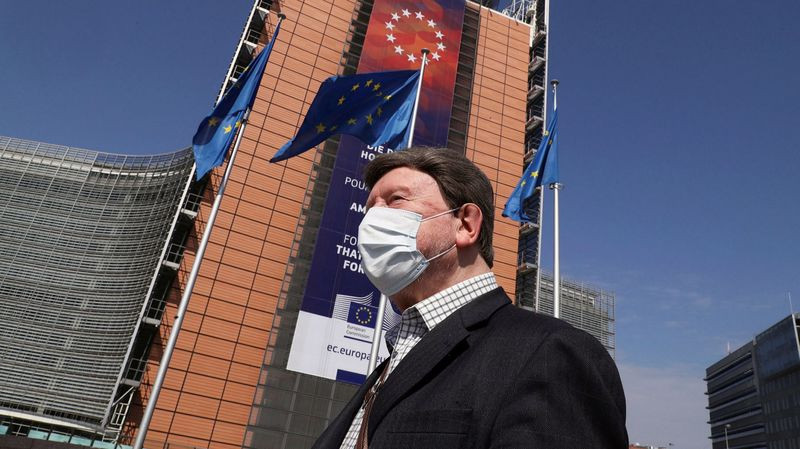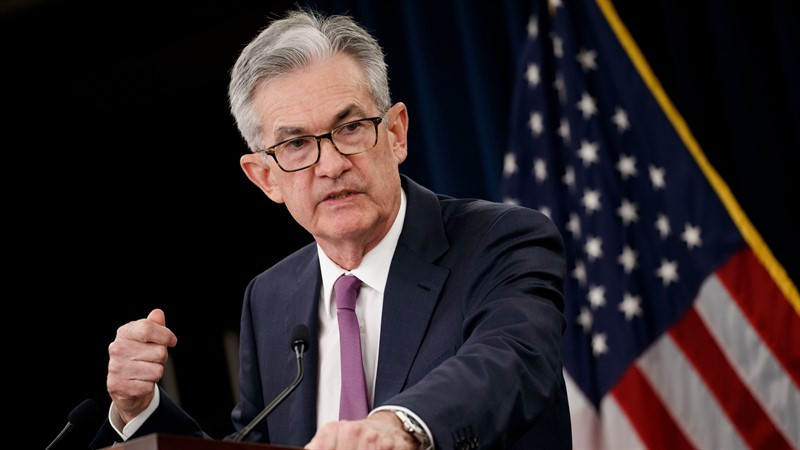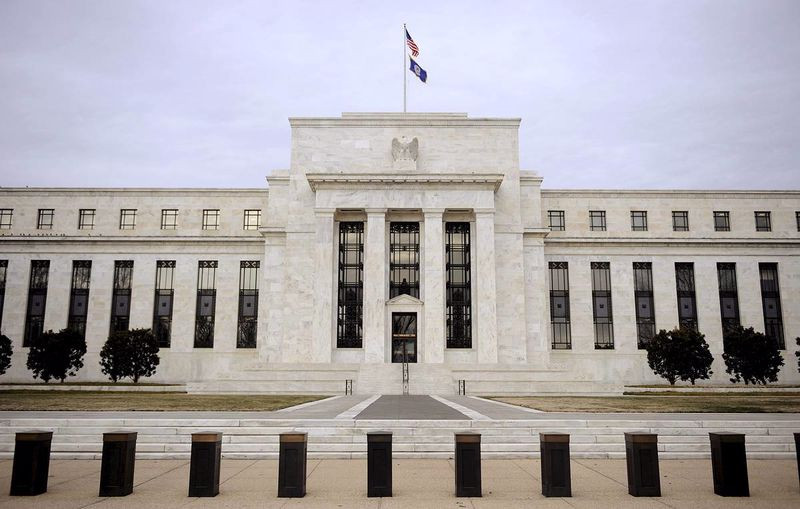
The five-day period is coming to an end, full of speeches by representatives of leading central banks, who seem to be much more frightened by the economic situation than they actually show.
During the week, the main currency pair fluctuates in a relatively narrow range, changing within 100-150 points.
The bulls' attempts to develop an upward momentum fade away as it approaches the 1.0600 mark, which acts as the upper limit of the short-term consolidation range, strengthened by the 100- and 200-day moving average.
On the other hand, the 1.0470 level (Fibo 23.6% correction) serves as a direct obstacle for the bears on the way to the psychologically important 1.0400 mark and the end point of the last downward move at 1.0380.
This week, the USD index is also trading mainly in a sideways range. The greenback has found decent support in the area of 103.60-103.80, with a decrease to which the US currency attracts bulls. The latter need to break above the weekly highs around 105.00 to update the peaks of 20 years ago.
Currently, investors are trying to understand how high the Federal Reserve and the European Central Bank can raise interest rates as part of the fight against inflation and in conditions of increased risk of an economic downturn.
Money markets estimate a rate hike in the eurozone by the end of the year at about 150 bps, expecting an increase in the cost of borrowing in the US by at least 175 bps.
At the same time, according to experts, the window for raising rates on both sides of the Atlantic is rapidly closing.
William Dudley, ex-head of the Federal Reserve Bank of New York, believes that a recession in the US is inevitable on the horizon of 12-18 months.
UBS strategists predict a recession in America with a probability of 69%. Earlier this week, analysts from Goldman Sachs and Citigroup also raised their estimates.
Fed officials themselves admit that failure to reduce price pressure will have disastrous consequences. In this case, the recession will happen for sure and will be much deeper.
Barclays analysts predict a recession in the eurozone economy in the fourth quarter of this year and in the first three months of next year.
"While the post-pandemic growth momentum of the eurozone economy, including the recovery of tourism in the summer and a large number of outstanding orders in many industries, should support growth in the second and third quarters, the situation is likely to worsen in the fourth quarter," they said.

Consumption in the region is expected to decline at the end of this year, as European consumers will feel a reduction in real incomes, and external demand is likely to be weak.
Bundesbank President Joachim Nagel warned that the ECB's actions too late could lead to more decisive actions later, which could then slow down or bring down economic growth.
"If monetary policy falls behind schedule, an even stronger increase in interest rates may be required to bring inflation under control. This would lead to much higher economic costs," he said.
"The ECB missed by not raising rates by 50 bps this month. Meanwhile, the window for raising rates in Europe is closing fast, at best they have two (maybe three) meetings before the region plunges into recession. If they want to get away from negative rates, they should go to 50 bp in July with very soft messages," Vanda Research analysts believe.
On Monday, ECB President Christine Lagarde reminded investors that the central bank will stop net asset purchases under the APP program from July 1, and also intends to raise its key rates by 25 basis points at the July meeting.
Lagarde also said that so far the central bank's main forecast does not imply a drop in the region's GDP and did not rule out another increase in rates in September.
At the same time, the ECB president noted that the central bank is on the path of normalization, but not tightening its monetary policy.
"We are in the process of normalizing monetary policy, but we are certainly not tightening monetary policy," she said.
The fact that prominent central bankers like to play with words is unlikely to surprise anyone.
Everyone remembers perfectly well how three years ago the US central bank re-launched the "printing press", and Fed Chairman Jerome Powell refused to call the asset purchase QE.
This week, he was again in the spotlight after the largest interest rate hike by the US central bank since 1994 last Wednesday.
Powell during his speech to the Senate Banking Committee said that the Fed is not trying to provoke a recession, but that it is certainly possible.
Powell's speech showed how much the inflationary environment in the United States has changed in the three months since he presented the first of his semi-annual reports to lawmakers.
At that time, inflation, according to the central bank's preferred indicator, was 6%, and then Powell said it would decline over the course of the year. However, then there were few signs of an easing of inflationary pressure, and the chairman of the US central bank was forced to admit that FOMC members underestimated the risks of high inflation.
The central bank is fully committed to establishing control over prices, even if it is fraught with an economic downturn, he said on Wednesday.
On Thursday, Powell made another speech in Congress, this time before the House Financial Services Committee, and continued to exaggerate.
The Fed's commitment to curbing inflation, which has reached a 40-year high, is unconditional, Powell said, noting that a sharp increase in interest rates could lead to an increase in unemployment.
"We really need to restore price stability, because without this we will not be able to ensure a long period of maximum employment, when the benefits are distributed very widely," he said.
"We don't have precise instruments, so there is a risk that unemployment will rise, albeit from a historically low level. The labor market with unemployment at 4.1% or 4.3% is still a very strong labor market," Powell added.

Why did the Fed have to admit a mistake with inflation?
According to the University of Michigan, American households now expect inflation at an average of 3.3% on the horizon of 5-10 years. These are the highest expectations since 2008. Back in May, the figure was 3%.
According to Powell, a sharp increase in rates makes a "soft landing" of the economy a very difficult task, but another risk is that high inflation may take root in the economy.
This is what worries the Fed and makes it act aggressively.
The leadership of the US central bank is well aware that the loss of control over inflation is guaranteed to lead to much more dramatic consequences in the economy, and while there is a chance, it should be used, despite the risks.
"We cannot fail in this: we really need to reduce inflation to 2%," said Powell.
Central bankers on the other side of the Atlantic are also wary of anchoring inflation expectations.
Record high inflation in the eurozone may fuel "inflationary psychology," ECB chief economist Philip Lane said on Monday, referring to the phenomenon when consumers and businesses adjust their habits in anticipation of price increases.
As soon as inflationary psychology begins to take effect, consumers increase their spending to counter rising prices, while businesses begin to raise their own prices, expecting higher costs, and both behaviors perpetuate inflation.
"Now we have very high rates of inflation, and it is obvious that we may find ourselves in a world where inflationary psychology takes over," Lane said.
Currently, the Fed and the ECB are doing their best to support their currencies, fearing that their weakness will only worsen the situation with inflation galloping everywhere.
No wonder Powell recently stated that the Fed's commitment to maintaining price stability ensures universal confidence in the dollar as a means of preserving capital.
The head of the Bank of France Francois Villeroy de Galo, in turn, warned of excessive weakening of the euro."A too weak euro will run counter to our goal of ensuring price stability," he said.
The dollar, which has grown by 9% this year against its main competitors, has lost some of its luster since investors began betting that the Fed could slow down the pace of rate hikes after another 75 basis point hike in July and could begin easing policy after March 2023.
The Fed's preferred inflation indicator, the basic price index of Americans' spending on personal consumption, which will be released next week, June 30, may fall into the piggy bank of such expectations. According to forecasts, the indicator for May should remain at the level of last month – 4.9%.
Meanwhile, the latest inflation data in the eurozone will be published on July 1, which, in turn, may determine whether the ECB will carry out more large-scale interest rate hikes after a quarter-point rise scheduled for July.
The greenback was trading under pressure on Friday, showing modest losses at the end of the week, while the EUR/USD pair remained in the green zone amid a revival in demand for risk.
The main world stock indexes were mostly growing on Friday. Key Wall Street indicators are adding about 2.5% on average.

Apparently, investors believe that if the Fed sees signs of slowing inflation in the coming months, then it will no longer need to raise the rate so aggressively.
However, market participants do not seem to take into account the fact that the tightening of the central bank's policy may continue for a longer period.
Powell said that the Fed cannot control all factors contributing to the growth of inflation, such as the conflict in Ukraine, which led to an increase in energy prices.
"The Fed's rate hike will not lead to lower prices for gasoline and food," he said.
Given the real risk of a global economic downturn, the stock market rally looks overly optimistic.
"The overestimation of expectations regarding the Fed's rate hike is holding back the dollar, but the compensating force is the risk of a global economic downturn. The Fed is largely working on autopilot, until they take their foot off the monetary brakes, the weakness of the greenback will be limited," said strategists at BMO Capital Markets.
Thus, the bullish potential of the dollar has not yet been fully realized, and the fall of the USD index to 103 looks like an opportunity to open tactical long positions in the US currency.
At the same time, short positions on the EUR/USD pair on growth remain a priority, given that the ECB is still falling behind the Fed in terms of raising rates, and the risk of a recession in the eurozone is higher than in the United States.
"The risks of a recession in the US are uncomfortably high and growing, but Europe is even more vulnerable in this regard," Moody's Analytics reported.
Capital Economics analysts note that the risks of recession are highest in the eurozone, where the cost-of-living crisis caused by inflation is combined with a possible shortage of gas.
"It is expected that by the end of the year the Fed's key rate will exceed 3%. Therefore, support for the dollar from higher interest rates in the US should continue to operate. In the meantime, the ECB is struggling to contain peripheral spreads and the eurozone is facing more serious stagflation pressures, which is hardly a tempting reason to buy the euro," Westpac said.
ING strategists thought about what combination of differences in the monetary policy of the ECB and the Fed and the global risk environment would be required to cause changes in the EUR/USD pair over the next 12 months, and presented a number of scenarios.
"Global Goldilocks" is the most optimistic scenario for the EUR/USD pair, in which it will reach 1.2000 in the next 12 months. This will require both the recovery of global stocks to the peak of January 2022 (+30%), and the complete elimination of the difference in the policy of the ECB and the Fed.
"Extreme stagflation" is the most bearish scenario, assuming the movement of EUR/USD to 0.90 in the second quarter of 2023. This will require a significant revision of the Fed's policy towards tightening compared to the ECB's policy, as well as a further fall in global stocks to levels last seen in the spring of 2020.
The "Fed reversal" is the bank's baseline scenario, implying a return of EUR/USD to 1.1000, which will be possible thanks to a gradual recovery in risk sentiment and some reduction in the difference in interest rates on both sides of the Atlantic.
 English
English 
 Русский
Русский Bahasa Indonesia
Bahasa Indonesia Bahasa Malay
Bahasa Malay ไทย
ไทย Español
Español Deutsch
Deutsch Български
Български Français
Français Tiếng Việt
Tiếng Việt 中文
中文 বাংলা
বাংলা हिन्दी
हिन्दी Čeština
Čeština Українська
Українська Română
Română

